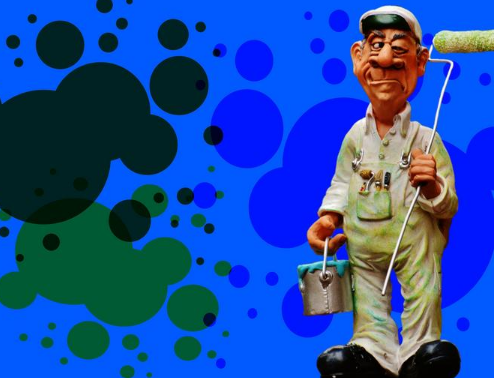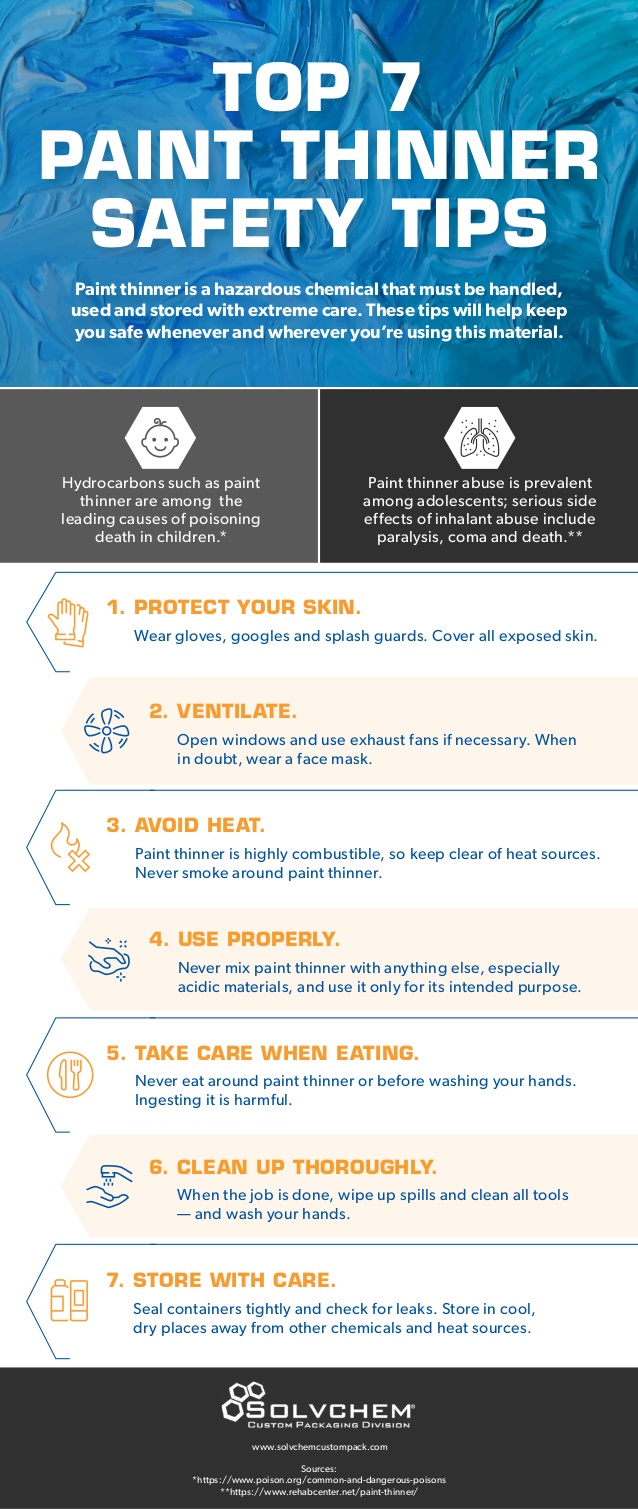 Despite its practicality in home renovation-based projects, paint thinner remains a dangerous material. Similarly to gasoline, paint thinner is a highly toxic product that can cause a number of problems to those around it if not used properly. If you happen to come into contact with the trace vapors that paint thinner can omit, you could face symptoms such as burning in the mouth and throat, feelings of nausea and frequent vomiting, shortness of breath, and sometimes even nerve or brain damage in the worst cases. Which is why it’s so important to be cautious whenever you’re planning on using or being around paint thinner.
Despite its practicality in home renovation-based projects, paint thinner remains a dangerous material. Similarly to gasoline, paint thinner is a highly toxic product that can cause a number of problems to those around it if not used properly. If you happen to come into contact with the trace vapors that paint thinner can omit, you could face symptoms such as burning in the mouth and throat, feelings of nausea and frequent vomiting, shortness of breath, and sometimes even nerve or brain damage in the worst cases. Which is why it’s so important to be cautious whenever you’re planning on using or being around paint thinner.
In addition to the adverse health effects this product can cause, users must also be aware of how combustible most of the paint thinners on the market can be. On average, these products have a flash point of around 104 degrees Fahrenheit, meaning if this product comes into contact with anything above that temperature rating, it is likely to set flame. This is particularly dangerous as accidents do occur fairly often throughout painting projects. Something as simple as forgetting that you used a rag to soak up some of the excess paint thinner and leaving that rag near a heat source can cause serious harm.
Here are a few tips to consider before starting any painting project involving paint thinner:
Protective Gear: making sure you’re properly equipped with protective gloves, googles, and splash guards is the first step to proper safety when using these products. Make sure all exposed skin is covered before starting your project.
Proper Ventilation: prior to beginning your project, ensure that you have proper ventilation through opening windows and using external fans if necessary. Rather than forcing yourself to breath the fumes, make sure enough air is circulating through the space.
Use as Intended: follow the instructions on any paint thinner product you purchase as diligently as possible. Remember to avoid mixing the paint thinner with other products as well.
Safe Storage: ensure all containers are sealed tightly and securely. Prior to storing these products, make sure there are no leaks. Store these products in coo, dry places that are away from any source of heat.
These few tips are an excellent start to reducing the risk of chemical-related injury as a result of paint thinner based projects in the home. Remember, that with any home improvement project, safety should always be of utmost importance. As long as it remains priority number one, safer habits will be formed and you can reduce the potential harm your family could face. For more information on how to safely utilize these products, take a look at the featured infographic below.

Author bio: Lynn Place is Vice President of Marketing for SolvChem Custom Packaging Division. She has 30 years of professional experience in the manufacturing industry and specializes in consumer packaged goods, new product development and strategic planning.






